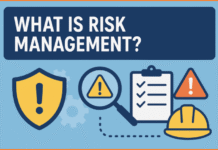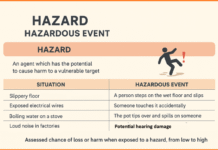Checkpoints before allowing a transport vehicle into factory gate:-
- Qualified and licensed driver. No intoxication.
- Name & quantity of material as per order & bill. Note vehicle No.
- Quality of material arrived I.e. sampling.
- Trem card.
- Tyre condition, spare wheel and jack.
- Main valve & other fittings, in safe condition.
- Blind disc, gasket etc.
- Piping, coupling and tools.
- Tanker pressure test certificate if required.
- Last material filled in and contamination if any.
- Cleanliness of the tank, if it is for filling.
- Exhaust muffler (spark arrester), if required.
- Fire extinguisher.
- Personal Protective Equipment required.
- First Aid Box and Antidote.
- Taking away bidi, cigarette, matches box etc. And no smoking instruction.
- Product license, if any.
- Static charge and leakage, if any.
- Compatibility of the material to be transferred.
- Other as per special need.
Checkpoints before unloading hazardous material into storage.
Liquid chemicals:
- Fixation of vehicle-wheel stopper, barricade, gear locking, engine stopping and wind direction consideration. Note vehicle No.
- Level checking of factory tank and road tanker and material matching.
- Proper piping connections.
- Safe flexible hose pipe & couplings.
- Emergency transfer preparedness.
- Flameproof electrical motors and fittings if required.
- Deep feed pipe to avoid static charge.
- Proper vent condition.
- Vapour line safety.
- Purging connection.
- Neutralising material for spillage.
- First Aid Box and Antidote.
- Fire Fighting Equipment.
- Personal Protective Equipment worn.
- Emergency kit ready.
- Lifting machinery, if required.
- Pump checking. Coupling guard, if required.
- Avoidance of air pressure transfer. If it is required, pressure gauge and safety valve on air tank. Pressure testing of air tank.
- Dyke, dyke discharge valve and partition wall condition. Acid proof lining for corrosive material.
- Safety shower/eye washer.
- Tank level gauge working and safe overflow pipe.
- Tank vent, Breather valve, N2 purging, flame arrester, Pressure gauge, Safety valve, Non-return valve, Excess flow valve, Lightening arrester etc. As per need.
- High/low level alarms and trips. Indication of flammable condition inside the tank.
- Operator on duty during full unloading.
- No smoking and no tempering.
- Record filling.
- Spillage washing.
- Engine restarting only after closure of tank and tanker valves, and spillage cleaning.
- Special precautions depending on nature of chemical viz. Flammable, toxic, corrosive, explosive etc.
- AC godown for liquids of low boiling points.
Gases/Gas cylinders:
- For liquefied gas in tanker viz. LPG, EO, NH3.
- Double checking of earthing and flameproof electrical connections.
- In case of leakage, portable hood and scrubber device, discharge in safe media, safe venting in air etc.
- Personal protective Equipment.
- Fire Fighting Equipment in ready condition.
- For gas cylinders, lifting and transfer device.
- Open space for speedy dispersion of leaking gas.
- Wind sock in vision and consideration of wind direction.
Solid materials and godown safety:
- Godown/warehouse condition regarding good ventilation, lighting, cooling, flooring etc. Windows/Grills/Louvers at 1 m height.
- No electric fitting for highly flammable material. Sufficient natural lighting.
- Flameproof electric fitting for flammable material.
- Separate stacking of flammable & toxic material – Zone or Area classification.
- Use of wooden/plastic crates and shelves.
- Spill collection arrangement and safe disposal to ETP or incinerator.
- Surrounding rain water gutters.
- Waste collection, beg filling and safe disposal. Ready stock of neutralising material.
- Safe disposal of empty containers.
- Compatibility of material, before putting together.
- Proper flooring-slope, pit, pump etc.
- Water line for cleaning.
- Air line for use of air line respirators.
- Proper tools, trolleys, lifts and containers for safe and easy transfer.
- Smoke/Flame detectors and gas leak detectors with alarms.
- Sprinklers and other fire fighting equipment inside and outside the rooms.
- Personal Protective Equipment required.
- Locked godown for poisonous material.
- Fire resistant walls/doors if required.
- Emergency exit on opposite side.






Thanks for knowledge sharing
Thank You sir